Want a more visual way to maintain your timeline?
The proof of the pudding…
Over the years, I've given my readers a surface-level view of my system. I didn't mean for it to be superficial… I just assumed the benefits thereof would be plain for all to see once they started implementing it – because, after all, the proof of the pudding is in the eating.
Before my 5-year old, Manuela, puts anything new into her mouth, she needs a reason to try it. As much as I assume she'll fall for oatmeal pancakes with honey and banana… she has no reason to trust this new concoction until she's had a tiny bite. It takes a lot of convincing, arm twisting and bribing with all kinds of promises and rewards. It took us weeks, with the help of a nutritionist and her mini kitchen to get Manuela to try pizza. It was a no-brainer that she would enjoy pizza… but how to get from here to there? This is how: a bit of professional help, manipulation and all manner of psychology. So this book is kind of like that.
I'm going to show you the run-of-the-mill, routine parts—ever so briefly—and then with the rest of the book I'll try my hand at some arm twisting… to show you why it is that you can't live without many of the dynamics and principles I'll be laying out.
The moving parts
So in this chapter I'm going to show you the moving parts of my timeline system. I'll give the broad strokes. Now if you were to unconditionally trust that this system was not only powerful enough to run your whole, entire life… but also a breeze to maintain, you could happily skip the rest of the book, and you'd figure out the rest all on your own. Really. That's how intuitive and self-regulating this system is. But of course you're not going to be that silly. You're not going to blindly trust me. Like Manuela, you're going to need some impossible-sounding claims and promises. You've likely already heard some of those—and you're intrigued—nevertheless, I've still got my work cut out for me. So onto the core structure and mechanics:
Behold! The timeline.
Here's what my WorkFlowy home page looks like:
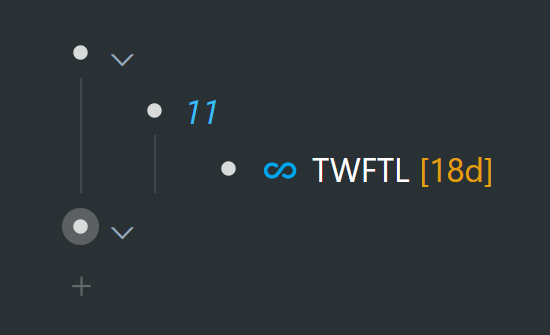
You see 2 top-level bullets: the first of the two has the current time block. It happens to be 11am at the time of writing… and under the 11am time slot, the thing I'm doing right now. I'm writing this book, "The WorkFlowy Timeline"… and there are 18 days left until the release date.
A fair amount has already happened leading up to 11am. But that's history. All I have is the current time block – which stretches into the rest of my day and the rest of my life.
And then there's the other bullet – which has the rest of my WorkFlowy stuff in it. The (continuation of) my timeline. Let's expand it…
The daily planner
Below you'll see my daily planner – the things I've got scheduled for (the rest of) today. It consists of a series of time blocks stretching until about 10pm.:
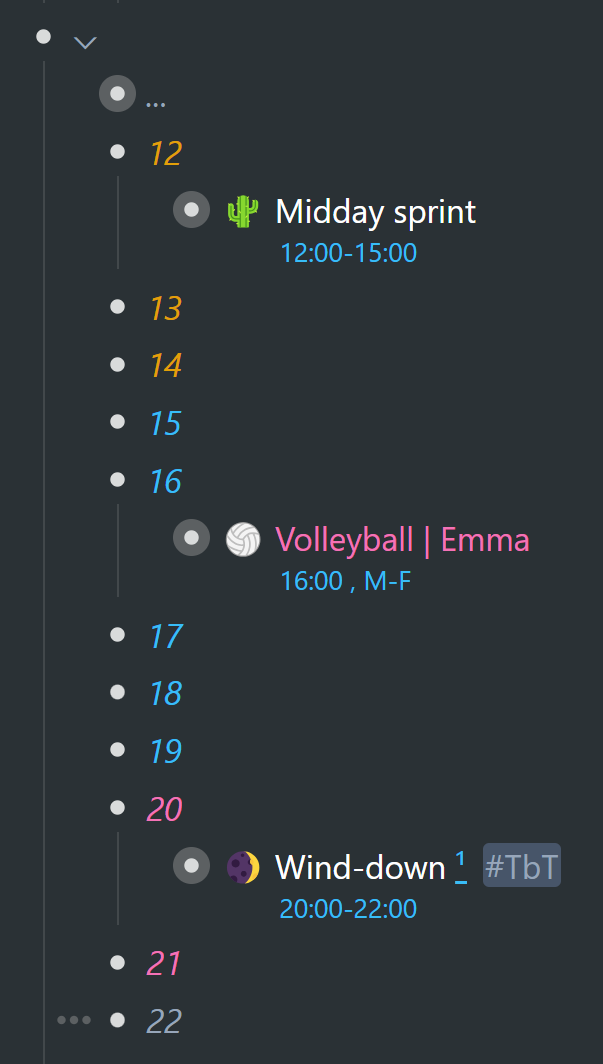
1. From midday I have a 3-hour stretch where I've bundled several items I find it easier to tackle during the low(er)-energy/ hottest part of my day.
2. I take my elder daughter, Emma, to her beach volleyball practice just before 4pm.
3. From 3-8pm today, my main focus is on book writing (the blue time blocks). Today at least. I usually sit in the car and write when Emma is at volleyball. The time blocks where I'm giving priority to writing are colored blue, to visually identify them.
4. There's a wind-down period, usually from 8-10pm.
For the time being, these details are unimportant as far as the bigger picture. This is just to account for the "empty" time blocks and give a sense of the flow of things. Most certainly your days will shape up way differently to mine.
Calendar
Below my daily-planner time blocks I have my calendar. So my time blocks for today flow directly into my calendar, which mainly consists of the current month and the next month. Let's back up a little and I'll scroll from the beginning of my timeline to the end. You'll see the sum total of my whole, entire life in a GIF: All of my hopes, dreams, plans, projects, events, reminders, expenses, etc., etc. There's surprisingly little. And it all just happens to be at the next logical, reasonable or opportune time along my timeline.
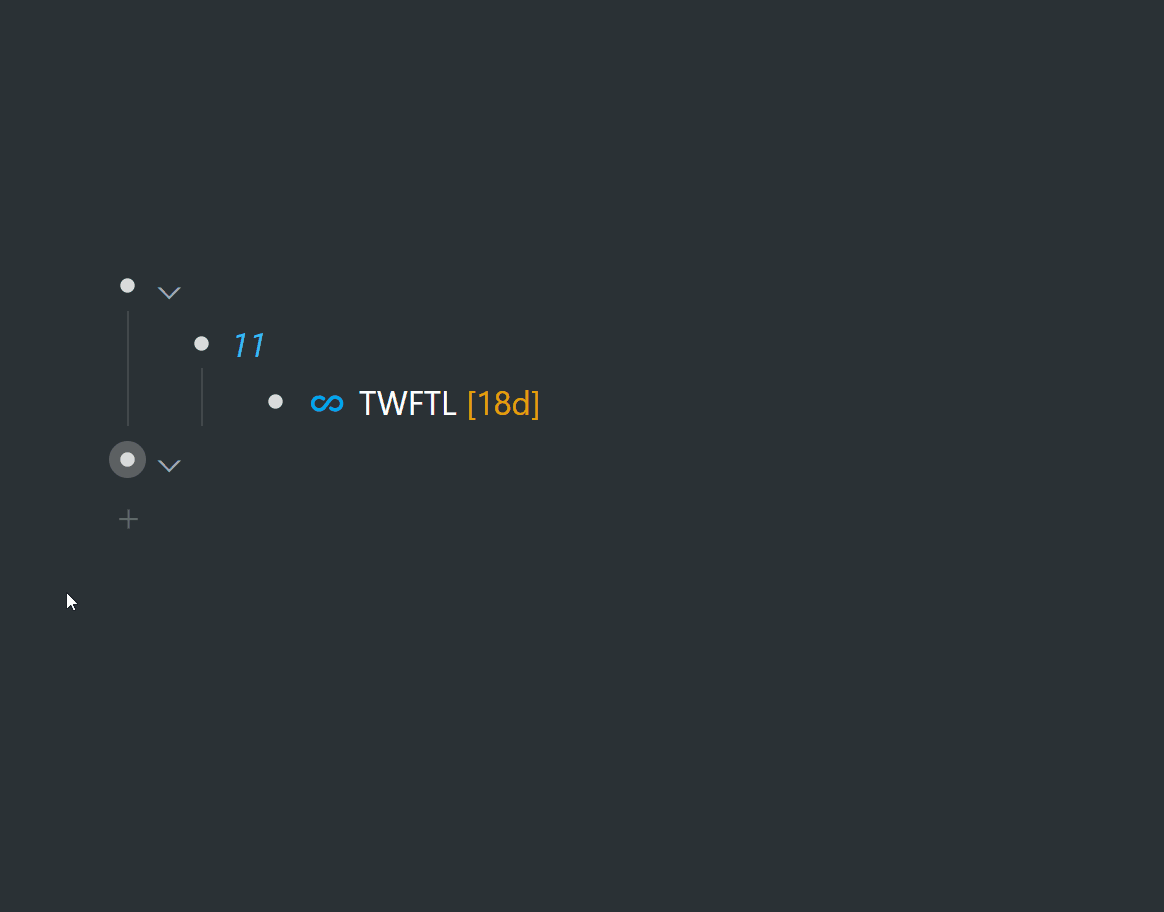
The tickler file
I often call my calendar a tickler file – because it has just enough days laid out to handle all my daily, weekly and monthly recurring items. The only reason I need a second month's worth of days is because I need a place to push monthly repeating items to.
Like a typical tickler file, I also have a placeholder for each of the upcoming 12 months. More about the idea behind the tickler file a little later ».
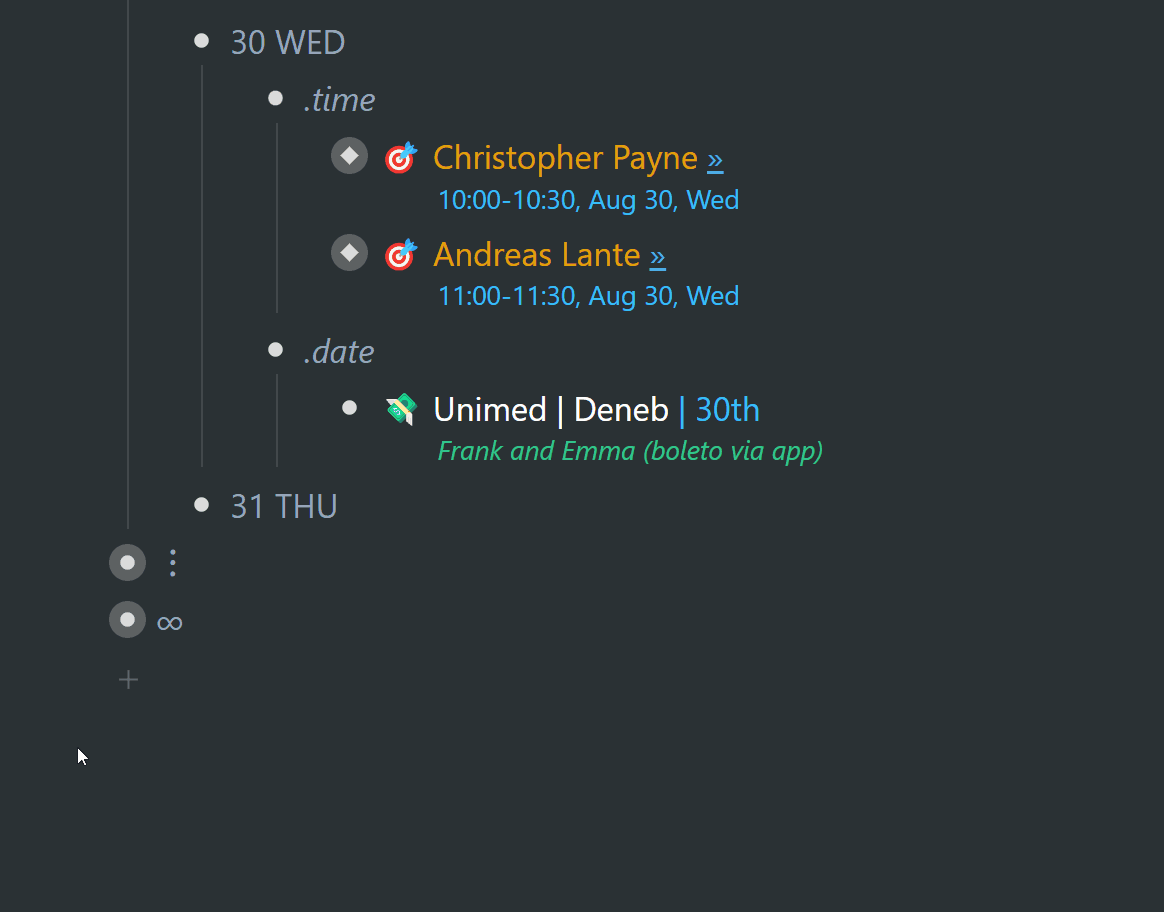
A more compact view
My timeline is filled with Frank-specific items. So it's not all that interesting to you.
Let's take a quick look at a more compact view of my timeline via the left bar, from beginning to end:
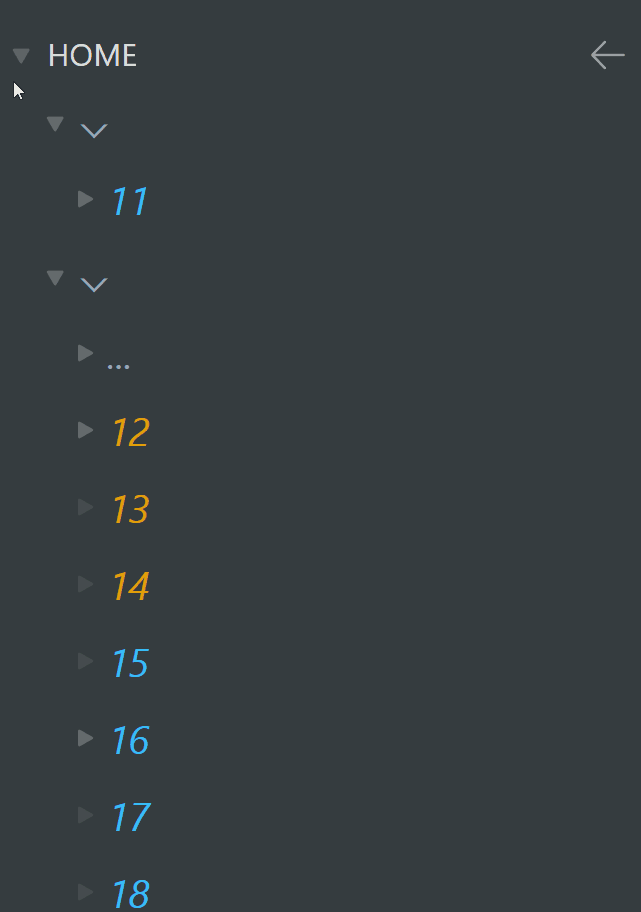
One simple line
That's my timeline – from beginning to end. The daily-planner time blocks flow into my calendar. And you wouldn't have expected anything less. No surprises there. No major or minor revelation. Just what you might have imagined (with your eyes closed). And this is where most people stop short. The system looks rather simplistic… and couldn't possibly hold up to a smarter PARA or GTD or anything-else-based system, right? Well… I've got GTD in boatloads… just not as my overarching structure. And I do implement classic GTD-like structures within projects and broader outlines, in the exact same way that other folk have them laid out. I'll get to explaining it all.
Jump straight into the next chapter while you've got momentum…
Basic mechanics: Pushing and pulling →Workflowy is a minimalist note taking app that helps you organize your life. Simple enough to hold your grocery list, powerful enough to hold your entire life.